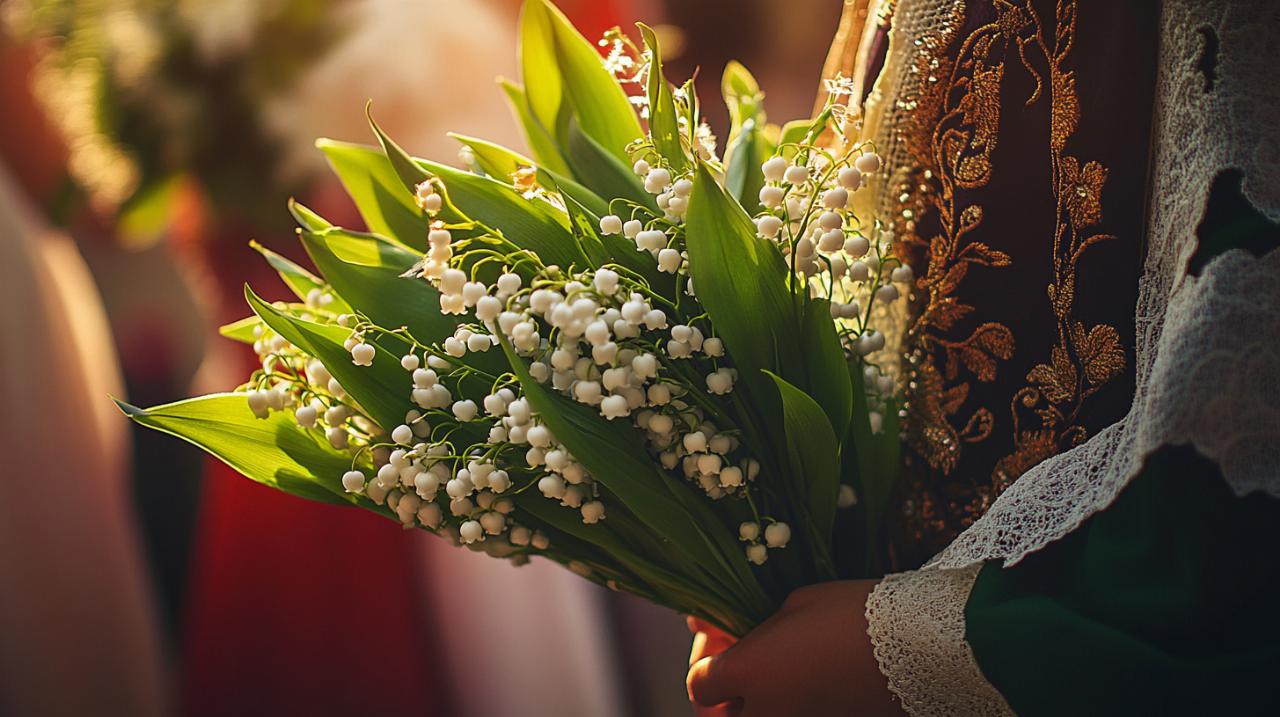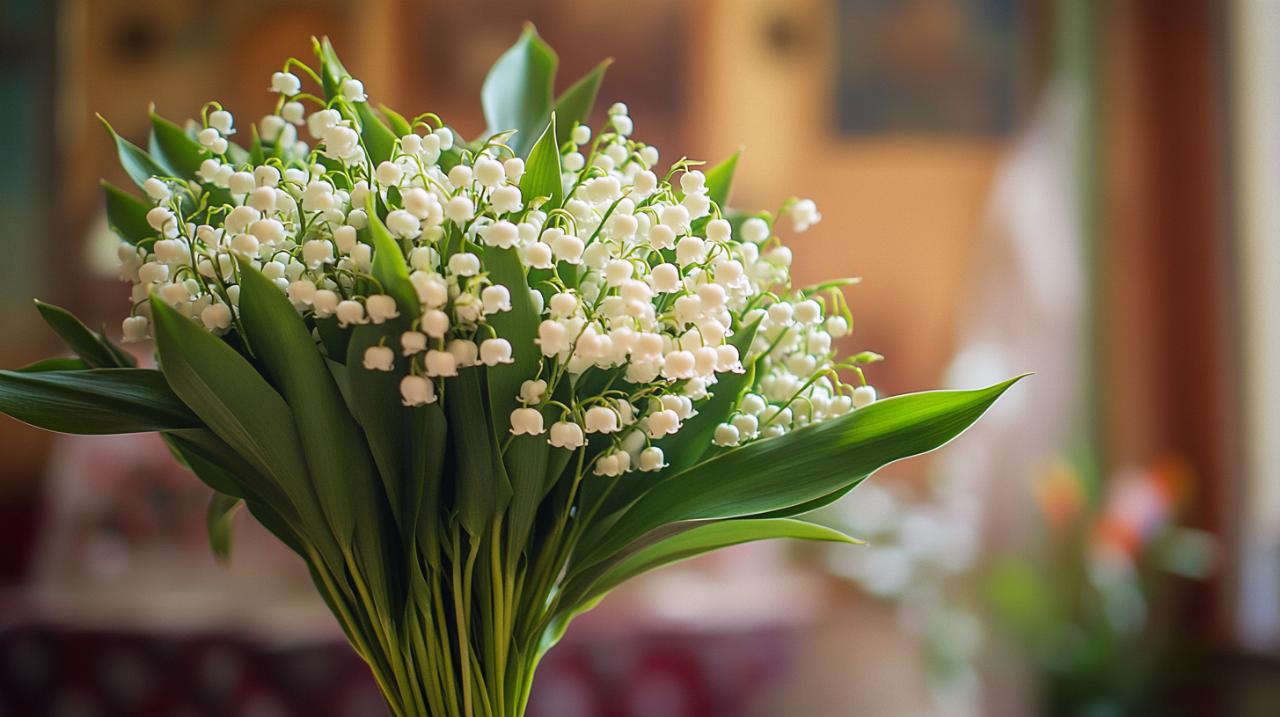The delicate white bells of the lily of the valley have graced the grand halls and gardens of European palaces for centuries, their sweet fragrance woven into the very fabric of regal tradition. This modest woodland flower, with its elegant drooping blooms and glossy leaves, transcends its humble origins to occupy a cherished place in royal iconography. Its journey from forest floor to ceremonial bouquet reveals a fascinating interplay of history, superstition, and the enduring human desire to imbue nature with meaning and magic.
The Historical Origins of Lily of the Valley in European Royal Courts
Medieval Traditions and Early Royal Adoption of the Delicate Bloom
The story of how lily of the valley, known scientifically as Convallaria majalis, became entwined with European royalty begins in the mists of medieval legend and folklore. Long before it adorned royal ceremonies, the flower held a special place in Celtic mythology, where it was believed to possess protective qualities and a connection to the otherworldly. The Virgin Mary, too, became associated with the bloom in Christian iconography, its purity and pristine whiteness reflecting her own sanctity. These early spiritual and mystical associations laid the groundwork for its eventual adoption by the ruling classes, who were always eager to align themselves with symbols of divine favour and moral virtue.
The pivotal moment in the flower’s royal ascent came in the year 1560, when King Charles IX of France initiated a custom that would endure for generations. Captivated by the charm of the delicate bells and their reputation as harbingers of good fortune, the monarch began distributing sprigs of lily of the valley to members of his court each May Day. This gesture was far more than mere botanical whimsy; it was a calculated act of royal benevolence, positioning the king as a giver of luck and prosperity. The tradition took root swiftly, and soon the first of May became synonymous across France with the gifting of Muguet, as the flower is known in French. The practice spread beyond the palace walls, and even today, selling lily of the valley on the streets on this date remains legal in France, a rare exemption that underscores the flower’s enduring cultural significance. If you wish to explore more about floral traditions and their modern interpretations, visit trend-lab.es for a wealth of insights.
The Flower’s Journey from Woodland Plant to Royal Emblem
The ascent of lily of the valley from its natural habitat in cool, shady woodlands to its status as a royal emblem was neither accidental nor instantaneous. Native to Europe, Asia, and parts of North America, Convallaria majalis thrives in the dappled light beneath forest canopies, where it spreads quietly through underground rhizomes. Its preference for zones three through seven and its ability to flourish in shadowy corners made it a plant well suited to the formal gardens of European estates, where gardeners cultivated it in carefully tended beds and decorative pots to prevent its vigorous expansion.
As the flower became more widely cultivated, its symbolic repertoire expanded. It came to represent not only purity and motherhood but also sweetness, innocence, and humility. The connection to the Greek god Apollo added a layer of classical grandeur, further elevating its cultural cachet. European nobles, ever mindful of the power of symbolism, embraced the lily of the valley as a living emblem of their own refined sensibilities and moral rectitude. Its appearance in courtly gardens and floral arrangements was a deliberate choice, a visual language that communicated values of grace, elegance, and good fortune. The flower’s delicate beauty belied its hardiness and resilience, qualities that resonated with aristocratic ideals of strength tempered by refinement.
Lily of the Valley in Modern Royal Celebrations and Ceremonies

Contemporary royal weddings featuring the iconic white flower
The tradition of incorporating lily of the valley into royal ceremonies has endured into the modern era, where it continues to play a starring role in some of the most significant and widely publicised events. Perhaps no figure exemplified this affection more than Queen Elizabeth II, who held the flower in particular esteem. At her coronation, the delicate blooms were woven into the arrangements, their presence a quiet but unmistakable nod to continuity and heritage. Throughout her long reign, the Queen’s fondness for lily of the valley was well documented, and the flower became almost a personal emblem, a discreet signature of her taste and values.
Royal weddings, those grand spectacles of pageantry and romance, have also featured the iconic white flower prominently. Brides from European royal families have chosen lily of the valley for their bouquets, drawn by its associations with happiness, purity, and the promise of a fortunate future. The flower’s small, nodding bells are perfectly suited to the restrained elegance that characterises royal nuptials, where every detail is laden with meaning and scrutinised by admirers around the world. These contemporary celebrations echo the customs established centuries earlier, demonstrating the remarkable staying power of this floral tradition.
The Symbolism of Purity and Good Fortune in Royal Events
The enduring appeal of lily of the valley in royal contexts lies in its rich and multilayered symbolism. Purity, a quality prized in royal iconography, is perhaps the most immediately apparent association. The flower’s immaculate white petals evoke an unsullied innocence, a quality that royal families have long sought to project, even as the realities of power and politics are far more complex. Beyond purity, the lily of the valley is also a powerful emblem of good fortune and happiness, qualities that make it an ideal gift and a fitting addition to celebratory occasions. The tradition initiated by King Charles IX of France, in which the flower serves as a lucky charm distributed on May Day, continues to resonate in modern royal practice.
Motherhood, too, is woven into the symbolic tapestry of the lily of the valley. The flower’s gentle, nurturing appearance and its associations with the Virgin Mary have made it a natural emblem of maternal love and care. For royal women, who often occupy roles that emphasise family continuity and dynastic succession, the flower’s connection to motherhood adds another layer of resonance. The lily of the valley thus serves as a versatile symbol, capable of conveying multiple meanings depending on the context in which it appears. Its presence in royal ceremonies is never accidental; it is a carefully chosen element that speaks to enduring values and aspirations.
It is worth noting, however, that the flower’s beauty conceals a more dangerous aspect. Convallaria majalis is poisonous if ingested, a fact that requires careful handling, especially in settings where children and pets might be present. This duality, the coexistence of beauty and peril, adds an intriguing complexity to the flower’s symbolism. It serves as a reminder that even the most cherished traditions carry hidden depths and that the natural world, for all its elegance, demands respect and caution. The lily of the valley, then, is a fitting emblem for royalty itself, embodying grace and danger, continuity and change, all within its delicate, drooping bells.





